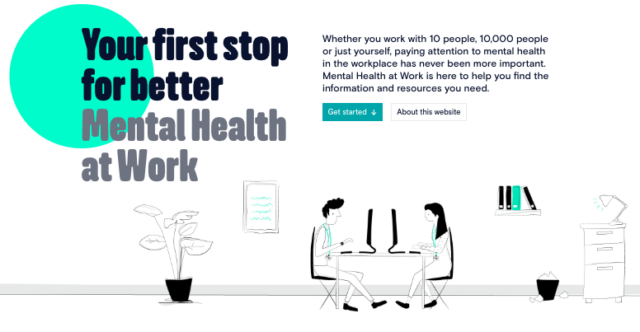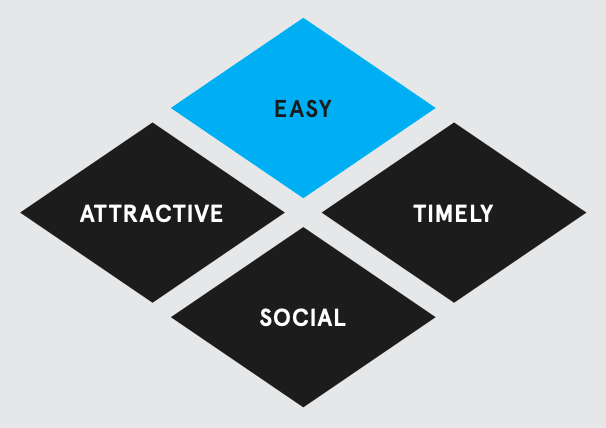Moving workplace mental health higher up the agenda
How do you get busy business leaders to care about the mental health of their staff?
We recently worked with Mind, the mental health charity, to develop a communications strategy to drive businesses towards two new workplace mental health products: a website for businesses of all sizes looking to better support the mental health of their employees and an e-learning toolkit for small workplaces. Both supported by the Royal Foundation through its Heads Together campaign.
Important but not urgent
It was quickly clear from our secondary research that we had a real challenge. While mental health is increasingly a hot topic for boardrooms of larger companies, the reality is it isn’t yet a priority for many smaller workplaces. When your eye is on driving efficiency, improving sales and keeping your customers happy, it’s easy to view the mental health of your people as important but not urgent.
So we needed to help Mind promote the resources in a way that addressed the barriers and motivations to engaging with mental health – and crucially avoid falling into the all-too-common trap of being politely ignored.
Following a messaging workshop, we developed a range of propositions and narratives to take into focus groups and depth interviews with business owners, directors and HR decision-makers in small and large workplaces from different sectors.

‘Are you giving me a burden, or taking it away?’
What we discovered was fascinating – but full of complexity, nuance and some contradiction. While larger organisations more readily understood the business case for investing in mental health, many smaller employers saw it as just another problem to keep them up at night. The idea that this might be a further responsibility to bear was in itself a significant source of stress and anxiety. One business owner said: “Are you giving me a burden or taking it away?”
It became clear that it wasn’t just that mental health wasn’t a priority for many smaller workplaces, but that it was often stuck in the box marked ‘too hard’.
The good news was Mind was highly respected as a trusted authority on mental health – and there was appetite to hear what they had to offer. The key was framing this offer in the right way.
Some of the messaging we’d taken into the research failed to land. Some lines felt too preachy or patronising, while others didn’t stir enough emotion or were just too wordy. But there were plenty of golden nuggets – and our job was to find and polish them. For example, the products’ ability to relieve the burden on employers got a big tick – as did being free, quick and easy to use.

Marrying audience insight with behavioural theory
Before reworking the messaging, we performed a behavioural diagnosis using UCL’s COM-B model, which helped prioritise the key barriers and identify actionable solutions. For example, the need to boost employers’ motivation to act by making it seem easier to support their people’s mental health.
We then considered how the Behavioural Insights Team’s EAST framework could help us shape our strategy and messaging to make the behaviour we were seeking from businesses feel easy, attractive, social and timely.
This work ultimately led us to a single audience truth: that it’s hard to support your staff well. Out of this came a single-minded proposition for how to position Mind in this space: Your expert partner, supporting you to support your staff.

The end result?
Using these behavioural models sharpened our focus on what mattered most – and enabled us to produce a coherent strategy and a concise messaging framework based on both theory and original audience insight.
Mind was able to begin implementing elements of the strategy immediately – while some more ambitious recommendations may take longer to pull off. It’s early days, and the fruits of our labour are yet to come.
Daisy Abbott, Mind’s Programme Manager for the Heads Together Workplace Wellbeing programme, said: “The insights Claremont provided about our audience were critical to establishing what messaging would resonate best when communicating about our products.”
Three things to take away
- Never underestimate the extent to which your well-meaning message is competing for attention – particularly if you’re asking busy people to change. Dialling up the urgency of acting and making it feel easier were both key here – a challenge applicable to many behaviour change campaigns.
- Message testing in focus groups always underlines the importance of simplicity – there’s no better filter for business jargon or wordiness.
- Focus groups are helpful to understand your audience – but often not enough by themselves. Using proven behavioural frameworks can aid your interpretation of audience research with evidence-based theory on how people think and act, ensuring the most important, actionable insights rise to the surface.
